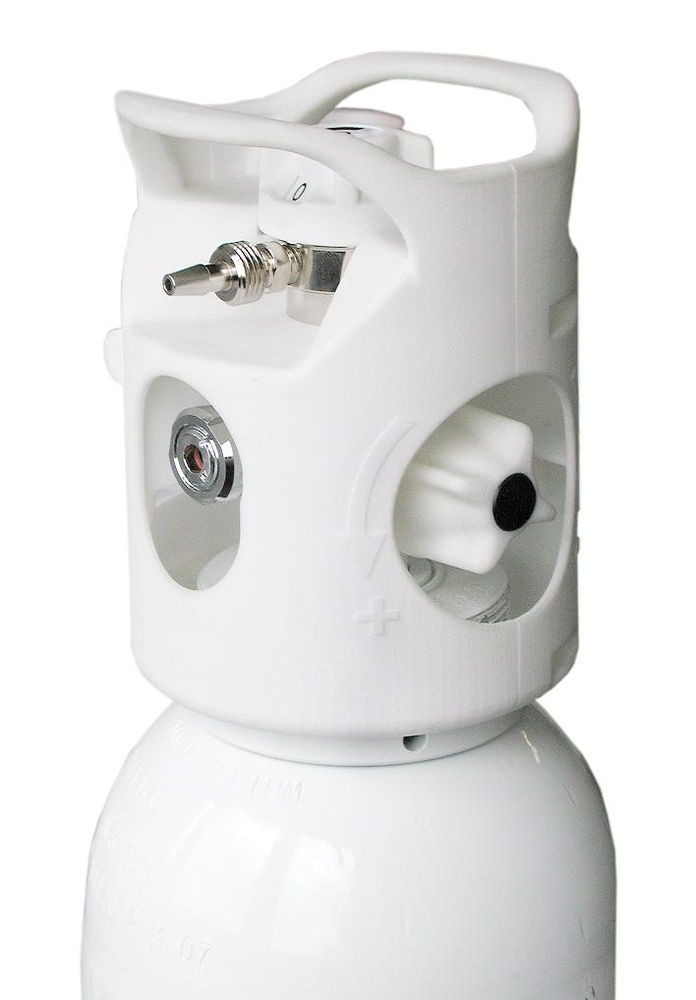
How to use MEDICAL LIQUID OXYGEN MESSER GAS FOR INHALATION IN CRYOGENIC CONTAINER
Introduction
Leaflet: Information for the user
Liquid Medical Oxygen MESSER
Medical oxygen 99.5% v/v
Oxygen
Read the entire leaflet carefully before starting to use the medicine, as it contains important information for you.
- Keep this leaflet, as you may need to read it again.
- If you have any doubts, consult your doctor or pharmacist.
- This medicine has been prescribed to you only, and you should not give it to others, even if they have the same symptoms of illness as you, as it may harm them.
- If you experience side effects, consult your doctor or pharmacist, even if they are side effects not listed in this leaflet.
Contents of the leaflet
- What is Liquid Medical Oxygen MESSER and what is it used for
- What you need to know before starting to use Liquid Medical Oxygen MESSER
- How to use Liquid Medical Oxygen MESSER
- Possible side effects
- Storage of Liquid Medical Oxygen MESSER
- Package contents and additional information
1. What is Liquid Medical Oxygen MESSER and what is it used for
Liquid Medical Oxygen MESSER is an inhalation gas that is packaged in containers that are cryogenic tanks
Oxygen is an essential element for the body. Oxygen therapy is indicated in the following cases:
- Correction of oxygen deficiency of various origins that require the administration of oxygen at normal or high pressure.
- Feeding of respirators in anesthesia - resuscitation.
- Administration of inhalation medications via a nebulizer.
2. What you need to know before starting to use Liquid Medical Oxygen MESSER
Do not use Liquid Medical Oxygen MESSER
With flammable materials, oxygen allows and accelerates combustion. The degree of incompatibility of materials with oxygen depends on the pressure conditions of gas use. However, the most significant risks of inflammation in the presence of oxygen are associated with combustible materials, especially those of a fatty nature (oils, lubricants), and organic materials (tissues, wood, paper, plastics...) that can ignite when in contact with oxygen, either spontaneously or under the effect of a spark, flame, or ignition point, or under the effects of adiabatic compression.
Warnings and precautions
In certain severe cases of oxygen deficiency, after 6 hours of exposure to a concentration of oxygen of 100%, or after 24 hours of exposure to a concentration of oxygen above 70%, pulmonary or neurological toxicity may appear.
High concentrations should be used for the shortest possible time and controlled through analysis of gases in arterial blood, while measuring the concentration of inhaled oxygen. It is convenient to use, in any case, the smallest dose capable of maintaining the partial arterial pressure of oxygen (PaO2) at 50-60 mm Hg (i.e., 5.65-7.96 kPa), and after 24 hours of exposure, try to maintain, as far as possible, a concentration of oxygen below 45%.
For infants who need a concentration above 30%, the partial arterial pressure of oxygen (PaO2) should be regularly controlled so that it does not exceed 100 mm Hg (i.e., 13.3 kPa) due to the risk of retinal alterations.
Hyperbaric oxygen therapy: to avoid the risk of injuries caused by high pressure, in body cavities that contain air and are in communication with the outside, compression and decompression should be slow.
Interaction of Liquid Medical Oxygen MESSER with other medications
The toxicity of oxygen can be increased by: corticosteroids, some cancer medications, paraquat, sympathomimetics, X-rays, or in cases of hyperthyroidism or deficiency of vitamins C and E or glutathione.
Pregnancy, breastfeeding, and fertility
It has been widely used without any notable effects.
Driving and using machines
There are no data on the effect of Liquid Medical Oxygen MESSER on driving and using machines.
3. How to use Liquid Medical Oxygen MESSER
The doctor will determine the correct dose of Medical Oxygen and administer it through a system suitable for your needs, ensuring the supply of the correct amount of oxygen.
If you think the effect of Liquid Medical Oxygen MESSER is too strong or too weak, tell your doctor.
If you use more Liquid Medical Oxygen MESSER than you should:
The concentration of inhaled oxygen should be decreased, and symptomatic treatment is recommended.
In case of overdose, consult your doctor or pharmacist immediately, or call the Toxicology Information Service, phone 91 562 04 20, indicating the medication and the amount taken.
4. Possible side effects
Like all medications, Liquid Medical Oxygen MESSERcan cause side effects, although not everyone will experience them.
In chronic respiratory failure, in particular, there is a possibility of apnea.
Inhaling high concentrations of oxygen can cause small collapses in the lung.
Administering oxygen at high pressures can cause damage to the inner ear (which can lead to a risk of eardrum rupture), sinuses, lungs (which can lead to a risk of pneumothorax).
Seizures have been reported after administration of oxygen with a concentration of 100% for more than 6 hours, especially with high-pressure administration.
Lung damage can occur after administration of oxygen concentrations above 80%.
In newborns, especially if premature, exposed to high concentrations of oxygen (FiO2 > 40%; PaO2 above 80 mm Hg, i.e., 10.64 kPa) or for a prolonged period (more than 10 days at a concentration FiO2 > 30%), there is a risk of retinopathy, which appears between 3 and 6 weeks after treatment, and can regress or cause retinal detachment, or even permanent blindness.
Patients undergoing high oxygen pressures in chambers may experience claustrophobia.
If you experience side effects, consult your doctor, pharmacist, or nurse, even if they are side effects not listed in this leaflet.
5. Storage of Liquid Medical Oxygen MESSER
Keep out of sight and reach of children
Containers should be installed in clean, well-ventilated areas, away from flammable and combustible materials, protected from heat and ignition sources.
Containers must be protected from shocks, especially filling, emptying, and safety elements.
Storage of gases intended for medical use must be separate from gases intended for other uses.
No parking should be done in the filling area of fixed containers.
Do not use Liquid Medical Oxygen MESSER after the expiration date shown on the packaging. The expiration date is the last day of the month indicated.
6. Package contents and additional information
Composition of Liquid Medical Oxygen MESSER
-The active ingredient is Oxygen.
-No excipients
Appearance of the product and package contents
Liquid Medical Oxygen MESSER is an inhalation gas that is packaged in containers that are cryogenic tanks with the following volumes:
Movable cryogenic container with the following capacities (in liters): 0.4, 0.8, 1.2, 21, 30, 31, 37, 41, 45, 50, 60, 120, 180, 196, 240, 448, 659, 897, and 996.
Fixed cryogenic container with the following capacities (in liters): 1900, 1975, 2650, 3200, 3300, 3370, 4700, 4820, 5520, 6000, 7000, 7900, 9540, 10530, 11000, 11700, 14250, 21600, 25580, 29450, 29900, 34850, 40500, 40900, 52600, 52840, 59040, and 62300.
Marketing authorization holder and manufacturer
Holder
Messer Ibérica de gases S.A.
Autovía Tarragona-Salou, Km 3.8
43480 Vilaseca (Tarragona)
Manufacturer:
Messer Ibérica de gases S.A.
Autovía Tarragona-Salou, Km 3.8
43480 Vilaseca (Tarragona)
Messer Ibérica de gases S.A.U.
Pol Industrial La Granadina III. C/ Francia esquina C/Grecia. Parcela 11.
03349 San Isidro. (Alicante)
Linde Gas España SAU
Pol. Industrial Can Pí de Vilaroch. Avinguda Antoní Gaudí, 151
08191 Rubí (Barcelona)
Linde Gas España SAU
Calle Del Pico Ocejon 40
19190 Torija (Guadalajara)
This information is intended only for healthcare professionals
Instructions for use/handling
Do not smoke.
Do not approach a flame.
Do not grease.
In particular:
- Never introduce this gas into a device that is suspected to contain combustible materials, especially if they are of a fatty nature.
- Never clean with combustible products, especially if they are of a fatty nature, either the devices that contain this gas or the taps, joints, gaskets, closing devices, and valves.
- Never apply any greasy material (vaseline, ointments...) to the face of patients.
- Do not use aerosols (hair spray, deodorant...) or solvents (alcohol, perfume...) on the material or near it.
The tanks of Liquid Medical Oxygen MESSER are reserved exclusively for therapeutic use.
To avoid any incidents, it is necessary to strictly follow the following guidelines:
- Verify the correct condition of all materials before use.
- Handle containers with protective glasses and clean gloves intended for this use.
- Do not touch cold or frosty parts of the material without proper protection.
- In case of cryogenic burns, rinse with plenty of water.
- Use specific oxygen fittings.
- If clothing becomes saturated with oxygen, move away from the source of liquid oxygen and areas that present a risk of inflammation, and remove the clothing.
- Do not use intermediate fittings that allow connecting two devices that do not fit.
- Do not smoke near the installation.
- Keep tanks away from flames.
- Open the consumption valve progressively.
- Never force a valve to open, nor open it completely.
- Do not attempt to repair a faulty valve.
- Use flexible connection elements in wall outlets provided with specific nozzles for oxygen.
- In case of leakage, close the valve that supplies the circuit with a leak and check the commissioning of the emergency system.
Date of the last revision of this leaflet:April 2025
“Detailed and updated information on this medication is available on the website of the Spanish Agency for Medicines and Health Products (AEMPS) http://www.aemps.gob.es/”
- Country of registration
- Active substance
- Prescription requiredYes
- Manufacturer
- This information is for reference only and does not constitute medical advice. Always consult a licensed doctor before taking any medication. Oladoctor is not responsible for medical decisions based on this content.
- Alternatives to MEDICAL LIQUID OXYGEN MESSER GAS FOR INHALATION IN CRYOGENIC CONTAINERDosage form: PULMONARY INHALATION, 21-22.5% v/vActive substance: oxygenManufacturer: Nippon Gases Espana SluPrescription requiredDosage form: PULMONARY INHALATION, Oxygen 21.0% v/v to 22.5% v/vActive substance: oxygenManufacturer: Oxigen Salud S.A.Prescription requiredDosage form: PULMONARY INHALATION, 100% oxygenActive substance: oxygenManufacturer: Linde Gas Espana S.A.U.Prescription required
Alternatives to MEDICAL LIQUID OXYGEN MESSER GAS FOR INHALATION IN CRYOGENIC CONTAINER in other countries
The best alternatives with the same active ingredient and therapeutic effect.
Alternative to MEDICAL LIQUID OXYGEN MESSER GAS FOR INHALATION IN CRYOGENIC CONTAINER in Poland
Alternative to MEDICAL LIQUID OXYGEN MESSER GAS FOR INHALATION IN CRYOGENIC CONTAINER in Ukraine
Online doctors for MEDICAL LIQUID OXYGEN MESSER GAS FOR INHALATION IN CRYOGENIC CONTAINER
Discuss dosage, side effects, interactions, contraindications, and prescription renewal for MEDICAL LIQUID OXYGEN MESSER GAS FOR INHALATION IN CRYOGENIC CONTAINER – subject to medical assessment and local rules.







